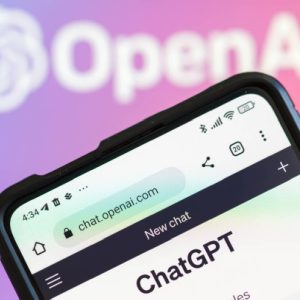
Communications regulator Ofcom has successfully moved TV broadcasters off the 700 MHz radio frequency — a three-year effort that it described as “one of the biggest projects we’ve ever been involved with” — with the spectrum to be auctioned off to mobile operators in January 2021; they will use it to support their 5G rollout efforts.
The band’s ability to achieve high levels of indoor penetration and long range look set to make it crucial to supporting broader 5G rollout; it was previously used for analogue televisions, wireless theatre microphones and TV production equipment across the UK, which has had to be reset to make the shift, Ofcom said of the successful migration.
The project has entailed a huge amount of manual work switching the frequency at which transmitters were operating; in many instances this has involved swapping the actual antenna. (The final switch was at the Douglas (Isle of Man) and Kendal Main transmitters and five relays on August 19 that together served 159,495 households.)
700 MHz: What Is It Good For?
5G will marry high-band airwaves such as 26MHz millimetre wave for high capacity over short distances; and mid-band spectrum like 3.4GHz; and low-band frequencies like 700MHz and 800MHz for longer range coverage.
700 MHz in particular has been flagged by regulators as central to deployment, with the European Commission noting late last year: “5G will rely in its progressive deployment on the other two pioneer bands in the Union (700 MHz and 3.6 GHz) until 2020 as well as on further spectrum.”
Ofcom’s completion came just days after chipmaker Qualcomm and China’s CBN broadcasting networld said they had achieved the world’s first 700 MHz-only 5G data call; demonstrating claimed downloads speeds of over 300 Mbps. (CBN added: “In March 2020, CBN’s technical proposal of large-bandwidth 700MHz 2x30MHz has been adopted by 3GPP and enlisted in global 5G standards, making it the world’s first global 5G standard for large-bandwidth 5G low-band (Sub-1GHz) spectrum and setting a new benchmark for the utilization of global 5G low-band spectrum resources.)
The project ran past many early deadlines: a report on the auction, released in March suggested work would be finished by May, while an earlier 2018 Ofcom report suggested that the 700 MHz spectrum could be auctioned off in 2019.
700 Megahertz Band Cleared
The newly arranged space on the band is to be auctioned off in January 2021.
The UK communications regulator enlisted the help of several organisations to clear the radio waves. The Department of Digital, Culture, Media and Sport provided the budget for the project and support for the effected members of the public. The communications infrastructure company Arqiva carried out any necessary engineering.
For the upcoming auctions, there will be a cap of 37% on the total amount of spectrum that any one telecoms company will be entitled to, “to ensure that consumers and businesses continue to benefit from strong competition”, Ofcom noted.
Read This: Gov’t Plans to Slash 5G Mast Red Tape: Launches £30m Rural 5G Fund
Philip Marnick, Ofcom’s Spectrum Group Director, said: “Demand for getting online on the move is soaring, and the pandemic has only increased the importance of mobile services to people and businesses. Releasing these airwaves promptly will bring a much-needed capacity boost, helping mobile customers get a better service.”
The licences won’t include any coverage obligations, however, as UK mobile network operators have already agreed to provide a “more comprehensive” service in the Shared Rural Networks Programme. The contracts for this programme were agreed on earlier this year with the Government, and include current spectrum licences, which are legally binding. Ofcom notes: “Spectrum in this band [700 mghtz] can be used to improve the level of mobile coverage across the UK, including mobile voice and data coverage in rural areas, inside buildings and in other harder-to-reach places”.






